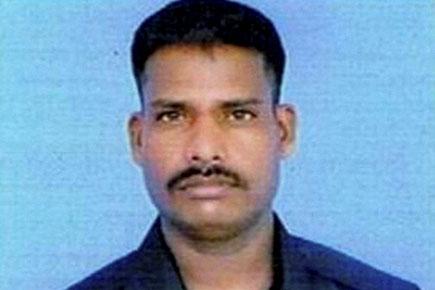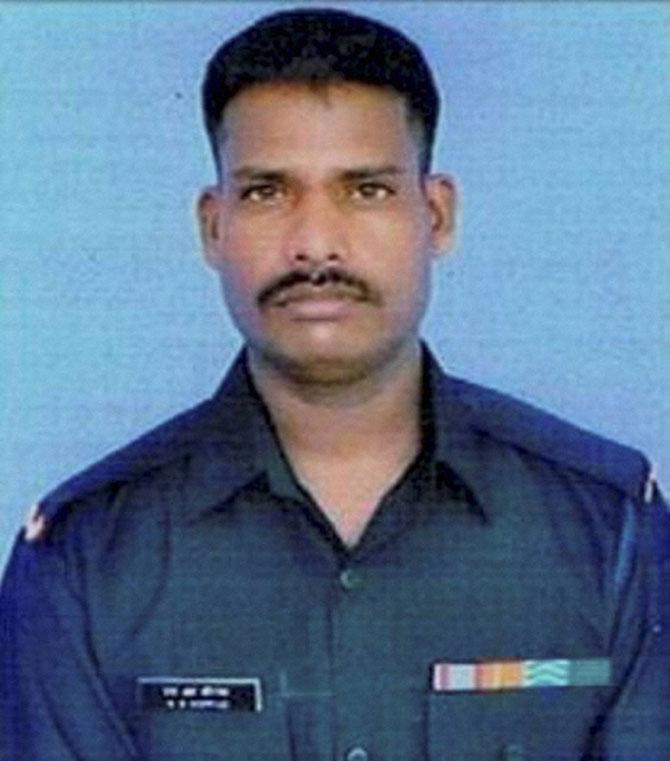Health experts feel ice may have played a key role in Lance Naik Hanumanthappa Koppad surviving six days buried under 35 feet of snow on Siachen glacier

New Delhi: While it was nothing short of a miracle that an Indian Army soldier was found alive six days after being buried under 35 feet of snow on Siachen glacier -- and presumed dead, not only the tough survival training modules that he underwent to face natural calamities but also the ice may have played a key role in his survival, say health experts.
“Organs are usually transferred or preserved in frozen situation. In the soldier's case, there is a possibility that the ice turned into a saviour which protected him from death,” Sameer Shrivastava, head of the department of non-invasive cardiology at Fortis Escorts Heart Institute, told IANS.
ADVERTISEMENT
 File photo of Lance Naik Hanumanthappa who is critical and on a ventilator at the Army’s Research & Referral Hospital in New Delhi on Tuesday. Pic/PTI
File photo of Lance Naik Hanumanthappa who is critical and on a ventilator at the Army’s Research & Referral Hospital in New Delhi on Tuesday. Pic/PTI
Lance Naik Hanumanthappa Koppad continued to be in shock with low blood pressure and was put on ventilator in the Intensive Care Unit of the Army Hospital (Research & Referral) in the national capital where he was flown in from Siachen base camp and admitted earlier on Tuesday.
The next one-to-two days were critical for the soldier, a medical bulletin said.
“Internal injuries can only happen when the external part of the body is damaged owing to extreme weather conditions. Apart from physical injuries, heart rate becomes very slow leading to cardiac arrest and basal metabolic rate (BMR) goes down leading to slow death while stuck in an avalanche which, miraculously, did not happen in this case,” Dr Shrivastava said.
Health experts also believe that Koppad survived because he was trapped in an air pocket. Soldiers posted in harsh icy conditions across the world are trained to look for air pockets in case of an avalanche and know how to clear the snow near the nose and the mouth so that they can keep breathing.
"Air pocket created between the snow layer can possibly be a reason for the soldier's survival. He was successful in getting some oxygen trapped in the air pocket that allowed him to breathe. Also, strong will-power to survive must have acted as an added advantage," said Col H.S. Chauhan, president of the Indian Mountaineering Foundation.
According to the Switzerland-based International Commission of Alpine Rescue (ICAR), those who are completely buried in an avalanche have a survival rate of 50 percent.
“It is vital not to get buried completely. Once you feel the avalanche has come to a stop, you must try to get something sticking out of the avalanche. Move your other arm across your face to the opposite shoulder to create an air bubble around your head and mouth,” said the website.
Lance Naik Koppad was one of the 10 soldiers of 19 Madras Regiment unit who were swept by the deadly avalanche on February 3 when they were manning the highest helipad in the world on Saltoro Ridge of Siachen glacier.
The soldier was found to be conscious but drowsy and disoriented. He was also severely dehydrated, hypothermic, hypoxic, hypoglycaemic and in shock.
"He has been placed on ventilator to protect his airway and lungs in view of his comatose state," the Army Hospital (Research & Referral) medical bulletin said.
 Subscribe today by clicking the link and stay updated with the latest news!" Click here!
Subscribe today by clicking the link and stay updated with the latest news!" Click here!







